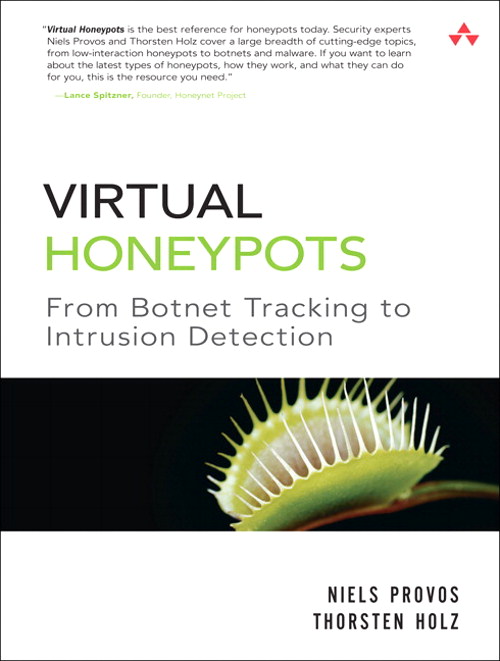Since reading Virtual Honeypots I’ve been wanting to implement a HoneyD system, developed by Niels Provos. From it’s own site, HoneyD is:
a small daemon that creates virtual hosts on a network. The hosts can be configured to run arbitrary services, and their personality can be adapted so that they appear to be running certain operating systems. Honeyd enables a single host to claim multiple addresses – I have tested up to 65536 – on a LAN for network simulation. Honeyd improves cyber security by providing mechanisms for threat detection and assessment. It also deters adversaries by hiding real systems in the middle of virtual systems.
My initial experience getting HoneyD running was frustration to say the least. Going with Debian to provide a stable OS, the install process should have been as simple as apt-get install honeyd. While keeping upto date with a Debian system can sometimes be difficult, the honeyd package is as current as it gets with version 1.5c.
For reasons that I can’t explain, this didn’t work first (or second) time so I reverted to compiling from source. The process could have been worse, only real stumbling block I hit was a naming clash within Debian’s package names. HoneyD requires the ‘dumb network’ package libdnet, but if you apt-get install libdnet you get Debian’s DECnet libraries. On Debian and deriviates you need libdumbnet1.
HoneyD’s configuration has the ability to get very complex depending on what you are looking to achieve. Thankfully a sample configuration is provided that includes examples of some of the most common configuration directives. Once you’ve got a config sorted (the sample works perfectly for testing), starting the honeyd is simple: honeyd -f /path/to/config-file. There are plenty of other runtime options available, but I haven’t had time to fully experiment with all of them; check the honeyd man pages for more information.
As well as emulating hosts and network topologies, HoneyD can be configured to run what it terms ‘subsystems’. Basically this are scripts that can be used to provide additional functionality on the emulated systems for an attacker/user to interact with. Some basic (and not so basic) subsystems are included with HoneyD. Some additional service emulation scripts that have been contributed to the HoneyD project can be found here. As part of the configuration, HoneyD can also pass specified IP/Ports through to live systems, either more indepth/specialised honeypot system or a full ‘real’ system to combine low and high interaction honeypot.
I’m still bearly scratching the surface of what HoneyD is capable of, and haven’t yet transfered my system to a live network to generate any statistics, but from my reading, research and experimentation I have high expectations.
— Andrew Waite
